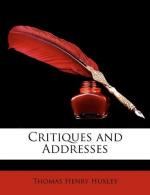When the coal burns, the chief ultimate products of its combustion are carbonic acid, water, and ammoniacal products, which escape up the chimney; and a greater or less amount of residual earthy salts, which take the form of ash. These products are, to a great extent, such as would result from the burning of so much wood.
These properties of coal may be made out without any very refined appliances, but the microscope reveals something more. Black and opaque as ordinary coal is, slices of it become transparent if they are cemented in Canada balsam, and rubbed down very thin, in the ordinary way of making thin sections of non-transparent bodies. But as the thin slices, made in this way, are very apt to crack and break into fragments, it is better to employ marine glue as the cementing material. By the use of this substance, slices of considerable size and of extreme thinness and transparency may be obtained.[1]
[Footnote 1: My assistant in the Museum of Practical Geology, Mr. Newton, invented this excellent method of obtaining thin slices of coal.]
Now let us suppose two such slices to be prepared from our lump of coal—one parallel with the bedding, the other perpendicular to it; and let us call the one the horizontal, and the other the vertical, section. The horizontal section will present more or less rounded yellow patches and streaks, scattered irregularly through the dark brown, or blackish, ground substance; while the vertical section will exhibit more elongated bars and granules of the same yellow materials, disposed in lines which correspond, roughly, with the general direction of the bedding of the coal.
This is the microscopic structure of an ordinary piece of coal. But if a great series of coals, from different localities and seams, or even from different parts of the same seam, be examined, this structure will be found to vary in two directions. In the anthracitic, or stone-coals, which burn like coke, the yellow matter diminishes, and the ground substance becomes more predominant, and blacker, and more opaque, until it becomes impossible to grind a section thin enough to be translucent; while, on the other hand, in such as the “Better-Bed” coal of the neighbourhood of Bradford, which burns with much flame, the coal is of a far lighter colour, and transparent sections are very easily obtained. In the browner parts of this coal, sharp eyes will readily detect multitudes of curious little coin-shaped bodies, of a yellowish brown colour, embedded in the dark brown ground substance. On the average, these little brown bodies may have a diameter of about one-twentieth of an inch. They lie with their flat surfaces nearly parallel with the two smooth faces of the block in which they are contained; and, on one side of each, there may be discerned a figure, consisting of three straight linear marks, which radiate from the centre of the disk, but do not quite reach its circumference. In the horizontal section these disks are often converted into more or less complete rings; while in the vertical sections they appear like thick hoops, the sides of which have been pressed together. The disks are, therefore, flattened bags; and favourable sections show that the three-rayed marking is the expression of three clefts, which penetrate one wall of the bag.




